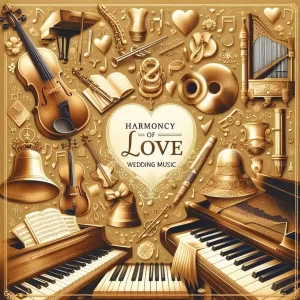Countee Cullen – An Authoritative, Prolific and Strident Poetic Voice From the Harlem Renaissance

Countee Cullen an American Romantic poet following the model of the English Romantic poet, John Keats, was one of the leading African American poets of his time, associated with the generation of black poets of the Harlem Renaissance amongst whose ranks was Claude Mckay, Langston Hughes, James Weldon Johnson, Nella Larsen, Melvin Tolson and Arna Bontemps. As a leading figure in the group he along with Langston Hughes produced the first large body of work in the United States written by African Americans. However, Cullen unlike the others considered poetry raceless, although his ‘The Black Christ’ took a racial theme, lynching of a black youth for a crime he did not commit.
I doubt not God is good, well-meaning, kind,
And did He stoop to quibble could tell why
The little buried mole continues blind,
Why flesh that mirrors Him must someday die,
Make plain the reason tortured Tantalus
Is baited by the fickle fruit, declare
If merely brute caprice dooms Sisyphus
To struggle up a never-ending stair.
Inscrutable His ways are, and immune
To catechism by a mind too strewn
With petty cares to slightly understand
What awful brains compels His awful hand.
Yet do I marvel at this curious thing:
To make a poet black, and bid him sing!
(‘Yet Do I Marvel’)
The Black Christ and Other Poems, was completed under the Guggenheim Fellowship, and published in 1929 while he was abroad. . The title poem was criticized for its use of Christian religious imagery -in comparing the lynching of a black man to Christ’s crucification.
Countee Cullen born Countee LeRoy Porter abandoned by his parents at birth, was raised by his paternal grandmother, Mrs. Elizabeth Porter.
It is unclear where he was actually born. Some sources say he was born in Louisville, Kentucky, whilst others say Baltimore. Later in his life, Cullen said he was born in New York City. But Louisville seems like the most likely birthplace since it was Louisville, where his mother died in 1940, he consistently named as his birthplace in his youth and which he wrote on his registration form for New York University.
Throughout his unstable childhood his real mother Elizabeth Thomas Lucas. never attempted to contact him, only attempting to do so until sometime in the 1920s, after he’d become famous. The name of his father is not known.
His grandmother Elizabeth Porter brought young Countee to Harlem when he was nine. and enrolled him in Public School Number 27 in the Bronx, New York, under the name of Countee L. Porter still living with her in 1916.
Shortly after she died in October 1917 Cullen was adopted at the age of 15 by the Reverend Frederick Ashbury Cullen, an influential minister who was the pastor at Salem African Methodist Episcopal Church in Harlem, one of the largest churches there at that time and raised as a Methodist. Countee went to live with this Reverend and his wife, the former Carolyn Belle Mitchell. Though Countee was never formally adopted, he later claimed the Cullens as his natural parents and in 1918 assumed the name Countee P. (Porter) Cullen and in 1925 dropping the middle initial.
Countee Cullen established an enviable reputation as an outstanding student in every school he attended. With the help of Reverend Cullen, he attended the prestigious respected, Dewitt Clinton High School for boys in Manhattan in 1918. A school mainly of all white, male students, DeWitt Clinton was considered to be one of the finest public schools in New York at the time to which very few African-American students were enrolled.
Young Countee not only did very well in school but was elected to class offices and won many awards. He became Vice President of his class during his senior year. He served in an editorial capacity on several of his school publications often as an editor. He was associate editor of the 1921 Magpie, the school’s literary magazine, and editor of the Clinton News. He was affiliated with the Arista Honor Society, the scholastic honor society. He served as treasurer of the Inter-High School Poetry Society and as chairperson of the Senior Publications Committee. He won an oratorical contest sponsored by the film actor Douglas Fairbanks In his senior year he received the Magpie Cup in recognition of his achievements.
His poetry which he had been writing since he was in elementary school appeared regularly in school publications. He received wider public recognition in 1921 when his first published poem , “I Have a Rendezvous with Life,” appeared in the DeWitt Clinton High School literary magazine, The Magpie. His recognition was expanded when later that year, it won first prize in a citywide poetry contest sponsored by the Empire Federation of Women’s Clubs and his winning stanzas widely reprinted. He kept on winning many more poetry contests from a very young age and often had his winning work reprinted.
He received special honors in Latin studies in 1922. Upon graduation, he received distinctions in Latin, mathematics, English, history and French.
Cullen attended New York University on a New York State Regents scholarship. There his works attracted critical attention. His poems were published frequently in the school magazine, The Arch, of which he eventually became poetry editor. He published works in various literary magazines, including Harpers, Century Magazine, and Poetry.
Also, his exceptional gifts for writing were acknowledged with prizes from The Crisis, edited by W. E. B. Du Bois, and Opportunity of the National Urban League. He graduated with honors in 1925 from New York University as a member of Alpha Phi Alpha fraternity, and was also initiated into Phi Beta Kappa honors society.
During his sophomore year at college he won first prize in the prestigious Witter Bynner Contest for undergraduate poetry in 1925. In May 1925, he won second prize in the Opportunity literary contest run by Opportunity magazine the literary organ of the National Urban League for his poem “To One Who Said Me Nay.” He was soon nationally known as a poet.
Soon after, he produced his first volume of poems entitled Color which won him the Harmon Foundation Award. Published the same year that he graduated from NYU it established him as the major poet of the Harlem Renaissance a movement centered in the cosmopolitan community of Harlem, in New York City during the 1920s, when a fresh generation of writers emerged, among the leading figures were Alain Locke, James Weldon Johnson, Claude McKay, Langston Hughes, Zora Neale Hurston, Wallace Thurman, Jean Toomer, Arna Bontemps, and of course Countee Cullen, a leading voice of the period. The movement was accelerated by grants and scholarships and supported by such white writers as Carl Van Vechten. Written in a careful, traditional style, the work celebrated black beauty and deplored the effects of racism.
The book included ‘Heritage’ and ‘Incident’, probably his most famous poems. ‘Yet Do I Marvel’, about racial identity and injustice, showed the influence of the literary expression of William Wordsworth and William Blake, but its subject was far from the world of their Romantic sonnets. The poet accepts that there is God, and ‘God is good, well-meaning, kind’, but he finds a contradiction of his own plight in a racist society: he is black and a poet. Color was a landmark of the Harlem Renaissance.
Cullen in his senior year at New York University, had already achieved national fame. His poems had been published in Bookman, American Mercury, Harper’s, Century, Nation, Poetry, Crisis, the Messenger, Palms, and Opportunity. He had won second prize in 1923 in the Witter Bynner Undergraduate Poetry Contest sponsored by the Poetry Society of America. He placed second in that contest again in 1924 but won first prize in 1925, when he also won the John Reed Memorial Prize awarded by Poetry magazine. In 1926 he received a master’s degree from Harvard University and won the Crisis magazine award in poetry.
Color received universal critical acclaim. Alain Locke wrote in Opportunity (Jan. 1926): “Ladies and Gentlemen! A genius! Posterity will laugh at us if we do not proclaim him now. COLOR transcends all of the limiting qualifications that might be brought forward if it were merely a work of talent.” The volume contains epitaphs, only two of which could be considered racial; love poems; and poems on other traditional subjects. But the significant theme–as the title implies–was race, and it was the poems dealing with racial subjects that captured the attention of the critics.
His second volume of poetry, Copper Sun, published in 1927 also by Harper and Brothers as were all his books, won first prize in literature from the Harmon Foundation. There are fewer racial poems in this collection than in Color, however, they express an anger that was not so pronounced in the earlier volume. The majority of the poems here deal with life and love and other traditional themes of nineteenth-century poetry.
Cullen became assistant editor for Opportunity,”A Journal of Negro Life” under Charles S. Johnson, in 1926 and wrote editorials and a column called “The Dark Tower” which featured book reviews and articles which all increased his literary reputation. . In his reviews and commentaries, he called upon African-American writers to create a representative and respectable race literature, whilst insisting that the African-American artist should not be bound by race or restricted to racial themes. For, Cullen had maintained that he preferred to be known as a poet, not a “Negro poet.” Some Harlem Renaissance writers, including Langston Hughes, viewed this as an attempt to deny his race, a view long held by some later scholars though a reading of his poetry reveals this unfounded. In fact his major poems, and most of those still being printed in anthologies, have racial themes. Cullen expounded his view in the Brooklyn Eagle (10 Feb. 1924):
If I am going to be a poet at all, I am going to be a POET and not a NEGRO POET. This is what has hindered the development of artists among us. Their one note has been the concern with their race. That is all very well, none of us can get away from it. I cannot at times. You will see it in my verse. The consciousness of this is too poignant at times. I cannot escape it. But what I mean is this: I shall not write of negro subjects for the purpose of propaganda. That is not what a poet is concerned with. Of course, when the emotion rising out of the fact that I am a negro is strong, I express it. But that is another matter.
He then pursued graduate studies at Harvard University graduating with an M.A. degree in 1926. Cullen received the Harmon Foundation Literary Award in 1927 as well as a Guggenheim Fellowship for study abroad.
Cullen’s productivity throughout the 1920’s earned him an immutable place in the Black cultural rebirth, the Harlem Renaissance. For he was already writing some of the acclaimed poems published in books by Harper and Brothers: Color (1925), Copper Sun (1927) The Ballad of the Brown Girl (1927) and The Black Christ (1929).Cullen’s poetry collections The Ballad of the Brown Girl and Copper Sun explored similar themes as Colour, but they were not so well received.
In April 1928, Cullen married Nina Yolande Du Bois, daughter of W. E. B. Du Bois the leading black intellectual and exponent of the “Talented Tenth” concept, then at a very prestigious and colourful ceremony. Du Bois rejoiced at bringing the young genius into his family. The wedding was the social event of the decade in Harlem. After a brief honeymoon in Philadelphia, Cullen left for Paris..
Two months after the wedding, Cullen left for Europe with his father and Harold Jackman a teacher whom the writer Carl Van Vechten had used as model in his novel Nigger Heaven (1926) with whom Cullen had developed a close friendship. His wife followed after a month.
Cullen continued his literary productivity even after the years of the Harlem Renaissance, but in more diverse ways: editing the October 1926 special issue of Palms devoted to African-American poets, collecting and editing Caroling Dusk , an anthology of poetry by African Americans in 1927 and then writing his only novel, One Way to Heaven which despite its satirical tone presents a “realistic picture of the New Negro Renaissance Harlem.” Cullen was by this time generally recognized as the leading literary figure of the Harlem Renaissance. Gerald Early in My Soul’s High Song (1991), Cullen’s collected writings, said, “He was, indeed, a boy wonder, a young handsome black Ariel ascending, a boyish, brown-skinned titan who, in the early and mid-twenties, embodied many of the hopes, aspirations, and maturing expressive possibilities of his people.”
The year 1928 was a watershed for Cullen. He was awarded a Guggenheim Fellowship under which he traveled to France to study in Paris. Yolande who had been having an affair with a popular band leader now had grounds to annill the marriage. She informed her father that Cullen had confessed that he was sexually attracted to men, Nina Yolande Du Bois then sued for divorce, which was obtained in Paris in 1930. The third volume of his poetry, The Ballad of a Brown Girl, was published.
By 1929 Cullen had published four volumes of poetry. As a lyric poet and not wanting to be considered a “Negro” poet Cullen concentrated on themes on love and nature. Though he did not wish to be categorized, but rather to be appreciated as an artist who happened to be of African descent, yet he wrote beautiful verses with racial themes. Such controversial views did not affect his popularity.
He remained much in demand for lectures and readings by both white and black groups. In 1931 alone he read his poetry and lectured in various institutions in seventeen states and Canada. Some of his poems were set to music by Charles Marsh, Virgil Thomson, William Schuman, William Lawrence, Margaret Bonds, Clarence Cameron White, Emerson Whithorne, and Noel DaCosta.
Being that royalties and lecture fees were insufficient income for his subsistence, he searched for academic positions and was offered professorships at Sam Huston College, Dillard University, Fisk University, Tougaloo College, and West Virginia State College. There is no clear explanation of why he did not accept any of the positions. In 1932 he became a substitute teacher in New York public schools and became a full-time teacher of English and French at Frederick Douglass Junior High School in 1934, a position he held until his death in New York City, and where he taught and where he was a very popular teacher who inspired the future novelist and essayist James Baldwin. As well as writing books himself, Cullen promoted the work of other black writers.though he had declined a Creative Literature invitation from Fisk University in Nashville.
Cullen continued to write and publish after 1928, but his works were no longer universally acclaimed. His single novel, One Way to Heaven , a social comedy of lower-class blacks and the bourgeoisie in New York City was published in 1932.His novel received little attention from the critics. His stage adaptation of it was produced by several amateur and professional theater groups but remained one of his several unpublished plays. Critics gave these works mixed reviews at best.
Cullen’s reputation as a writer rests on his poetry. He rejected so-called jazz and free-style as inappropriate forms of poetic expression. He was a romantic lyric poet and a great admirer of John Keats and Edna St. Vincent Millay basing his works on such Romantic poets, especially Keats . As a poet Cullen was conservative. He did not ignore racial themes, , and often used the traditional sonnet form. “Not writ in water nor in mist, / Sweet lyric throat, thy name. / Thy singing lips that cold death kissed / Have seared his own with flame.” (‘2. For John Keats, Apostle of Beauty’)
However, Cullen also enjoyed Langston Hughes’s black jazz rhythms, but he loved “the measured line and the skillful rhyme” of the 19th century poetry more. After the early 1930s Cullen avoided racial themes.
Cullen’s later publications include On These I Stand (1947), a collection of his favorite poems, and the play The Third Fourth of July (publ. 1946).While his arch traditionalism and lack of originality in style had been seen in Color as minor flaws, they came to be viewed as major deficiencies in his later works.
In 1940, he married an old friend Ida Mae Roberson. They had known each other for ten years and they enjoyed a happy and satisfying marriage.
In the last years of his life Cullen wrote mostly for the theatre. He collaborated with Arna Bontemps helping her adapt her novel, God Sends Sunday (1931), which he entitled St. Louis Woman (1946, publ. 1971) for the musical stage with its score composed by Harold Arlen and Johnny Mercer, both white. St. Louis Woman opened on Broadway on 30 March 1946.
The Broadway musical, was set in a poor black neighborhood in St. Louis. Although the production was opposed by Walter White of the National Association for the Advancement of Colored People and some other civil rights activists as an unfavorable representation of African Americans, it ran for four months and was revived several times by amateurs and one professional group between 1959 and 1980.
Cullen also translated the Greek tragedy Medea by Euripides seven choruses of which were set to music by Virgil Thompson. and the translated play published in The Medea and some Poems (1935), with a collection of sonnets and short lyrics.
He also wrote two works for young readers: The Lost Zoo (1940), poems about the animals who perished in the Flood, and My Lives and how I Lost Them, an autobiography of his cat.
His one act play, The Third Fourth of July, introducing Pearl Bailey as Butterfly ran for 113 performances at the Martin Beck Theater on Broadway.
On January 9, 1946, Cullen suddenly died of a gastrointestinal disorder occasioned by uremic poisoning and complications from high blood pressure. Although he died a relatively young man, Cullen was considered one of the best known poets of his time so was honored as the most celebrated African American writer. A collection of some of his best work arranged in On These I Stand , a collection that he had selected as his best, was published posthumously in 1947.
Being for some time the most celebrated African-American writer in the nation and by many accounts one of the major voices of the Harlem Renaissance, public schools in both Chicago and New York City have been named after him. The 135th Street Branch of the New York Public Library was also named in honor of him in 1951.
Further Reading:
- Gerard Early. About Countee Cullen’s Life
- UIUC Modern American Poetry
- The New Negro by Alain Locke (1925)
- Cullen and the Negro Renaissance by B. Fergusson (1966)
- Native Sons by E. Margolies (1968)
- A Bio-Bibliography of Countee Porter Cullen 1903-1946 by M. Perry (1971)
- Black Poets of the United States by J. Wagner (1973)
- The Many-Colored Coat of Dreams: The Poetry of Countee Cullen by H.A. Baker, Jr. (1974)
- Black Poetry in America by B. Jackson and L. Rubin (1974)
- Harlem Renaissance by M. Perry (1982)
- Modernism and the Harlem Renaissance by Houston A. Baker Jr (1987)
- ‘Countee Cullen: A Careful Talent’ in Great Black Writers by Steven Otfinoski (1994)
- World Authors 1900-1950, vol. 1, ed. by Martin Seymour-Smith and Andrew C. Kimmens (1996)
- The Atlas of Literature, ed. Malcolm Bradbury (1996 – see chapter on Harlem Renaissance)
- Critical Essays: Achebe, Baldwin, Cullen, Ngugi, and Tutuola by Sydney E. Onyeberechi (1999)
- .American National Biography Online Countee Cullen, 1941.
- Countee Cullen’s personal papers (1921-1969, c. 4,400 manuscripts and photographs and thirty-nine volumes) in the Amistad Research
- Center at Tulane University; microfilm copies of that collection are in other repositories.
- The James Weldon Johnson Collection in Beinecke Library at Yale University contains more than 900 letters written by and to Cullen and other writings by and about him.
- Michael L. Lomax, “Countee Cullen: From the Dark Tower” (Ph.D. diss., Emory Univ., 1984).
- .The biographical introduction to My Soul’s High Song: The Collected Writings of Countee Cullen, Voice of the Harlem Renaissance, ed. Gerald Early (1991). containing reprints of all Cullen’s published books except Caroling Dusk, The Lost Zoo, My Lives and How I Lost Them, and On These I Stand; as well as some of Cullen’s uncollected poems, speeches, and essays.
- Blanche E. Ferguson, Countee Cullen and the Negro Renaissance (1966)
- Margaret Perry, A Bio-Bibliography of Countee P. Cullen, 1903-1946 (1971)
- .Alan R. Shucard, Countee Cullen (1984)
- Houston A. Baker, Jr., “A Many-Colored Coat of Dreams: The Poetry of Countee Cullen,” in his Afro-American Poetics: Revisions of Harlem and the Black Aesthetic (1988), pp. 45-87
- Isaac William Brumfield, “Race Consciousness in the Poetry and Fiction of Countee Cullen” (Ph.D. diss., Univ. of Illinois at Champaign-Urbana, 1977)
- Nicholas Canaday, Jr., “Major Themes in the Poetry of Countee Cullen,” in The Harlem Renaissance Remembered, ed. Arna Bontemps (1972), pp. 103-25
- .Eugenia W. Collier, “I Do Not Marvel, Countee Cullen,” in Modern Black Poets, ed. Donald B. Gibson (1973), pp. 69-83
- .Arthur P. Davis, “The Alien-and-Exile Theme in Countee Cullen’s Racial Poems,” Phylon 14 (Fourth Quarter 1953): 390-400
- Robert E. Fennell, “The Death Figure in Countee Cullen’s Poetry” (M.A. thesis, Howard Univ.1970)
- David Kirby, “Countee Cullen’s Heritage: A Black Waste
- Land,” South Atlantic Bulletin 4 (1971): 14-20
- James Baldwin, “Rendezvous with Life: An Interview with Countee Cullen,” Magpie 26 (Winter 1942): 19-21
- David Levering, Baldwin (1994).
- Obituaries and related articles in the New York Herald Tribune, 10 Jan. 1946; the New York Times, 10 and 12 Jan. 1946, and the Negro History Bulletin 14 (Feb. 1946): 98.





